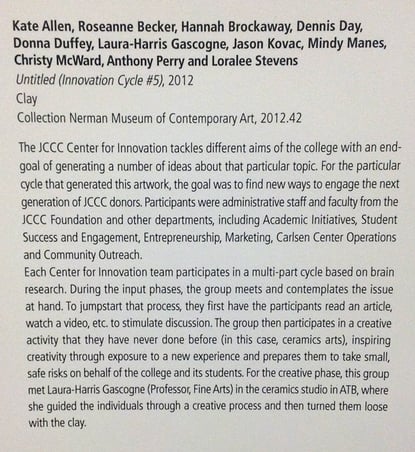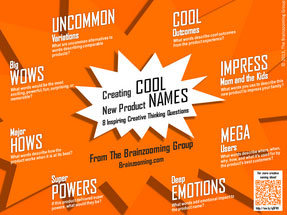Suppose you’ve been successful innovating. Suddenly, you can start over in the same field. What new product development strategy might an Idea Magnet employ to pursue a fresh path to new ideas?
That’s a question guitar innovator Rick Turner faced. While you may have never of Rick Turner, you have undoubtedly heard and probably seen one of his famous innovations: the Model 1 guitar. He designed the instrument forty years ago for Lindsey Buckingham, formerly of Fleetwood Mac.
Previously, Turner designed guitars for another company. Realizing that product’s limitations, he started from scratch to design something completely new, yet familiar and functional. Turner fashioned a first design for his new fledgling company that suited Buckingham so well that he gave up iconic Fender and Gibson guitars (affiliate link) to exclusively play the Model 1.
This is Turner’s personal perspective on his new product development strategy. (Italics are ours, indicating key concepts.)
‘The trick in a game like this—designing from scratch—is to climb down off the particular design tree you’ve been exploring and go find a new tree. You have to really get back down to the very ground and try to a) forget everything you’ve been doing, and b) don’t forget anything because it might be useful. It requires that you logically justify each and every little decision, and that you do nothing just because “that’s how it’s done” or because “that’s what I know how to do.” It means that you have to start with the results you hope to achieve and work backward, always keeping an open mind, but also trying to work with what you know and what you’ve learned from other people, other instruments, and of things completely outside the musical instrument world.’
Climbing Down and Finding a New, New Product Development Tree

Turner spells out a workable strategy for how Idea Magnets can reinvent a product or service within the same category:
- Walk away from what’s familiar and find a new vantage point for innovation
- Simultaneously forget everything and nothing about what you know
- Challenge every decision to ensure you aren’t leaning on the familiar
Employing the concept of working from a new design tree, these five ideas provide a new product development pat to find different places and approaches from which to innovate:
#1 Identify Every Assumption in Your Current Design Tree
Before you begin, list everything you know and assume about previous innovations and how you’ve approached them. Look at data sources related to what you produce, seeking insights revealing your assumptions and preconceived patterns.
After exhausting these sources, involve other stakeholders, inviting them to expand and adapt the list. Stakeholders could include people involved in the production of what you do, the marketing and sales team behind your products, and even customers. They will all perceive different assumptions and requirements that they encounter with your product or service. Everything you and they add to the list is a starting place for diverting from previous patterns. As you begin innovating, review and update the list to include other assumptions you may have missed previously.
#2 Introduce One or More Constraints
Using the assumptions list, experiment with constraints to redirect your typical innovation process. For instance, if you generally use a certain resource, change your innovation path by not using it. If you always take the same steps, stipulate upfront that you’ll follow different steps or even do exactly the opposite. Depending on your flexibility for innovation, failure, and quick adaptation, you could eschew the standard scientific model (change and experiment with one variable at a time) and change multiple things, maybe even everything, simultaneously. You can use this approach to accentuate your break from what you’ve done previously.
#3 Forgetting Everything and Nothing You Know
Even if you want to forget what you know as you innovate, you needn’t totally ignore previous lessons when making decisions about innovations that best deliver on your business objectives. Before innovating, list the criteria for evaluating how successful any innovative idea might be at contributing to previously-established objectives. Knowing that the evaluation method incorporates previous learnings opens up a space for taking greater risks in experimenting and innovating, since you can depend on prioritization decisions based on proven performance.
#4 Let Others Help You Innovate from Their Design Trees
Never underestimate how challenging it will be to leave your current tree to innovate from another one. If you’re struggling, invite someone else into the innovation role you typically play. This can range from asking for ideas on changes they’d make (and following through on attempting them) to having someone else carry out processes you’d use (to see how they do them differently), to delegating innovation responsibilities to others. Any of these approaches can aggressively force you to look from a different design tree.
#5 Select a Challenger to Call B.S. on You
Seek help from someone familiar with your innovation history to serve as a designated challenger. Invite them to call you out not only when they see you returning to something they’ve experienced before, but also based on the list of assumptions you prepare. While this can be a challenging approach, it’s valuable to incorporate another’s perspectives to keep you honest about not falling back on comfortable strategies.
Idea Magnets and New Product Development
Creating opportunities to innovate from scratch are a fantastic way to push yourself to surrender the familiar, comfortable ways you typically innovate and start off in a new direction with completely new thinking. – Mike Brown




